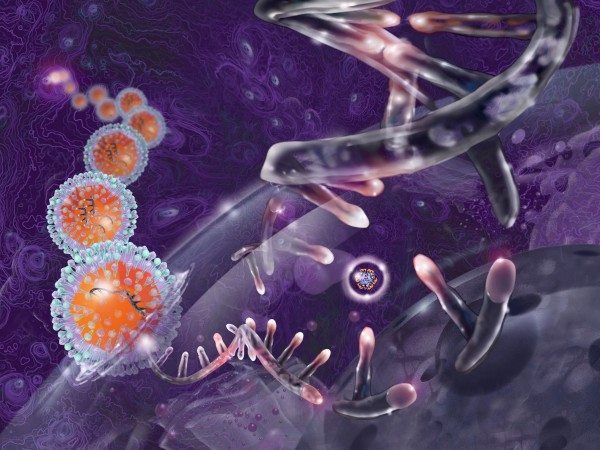A virus that shuttles a therapeutic gene into cells may one day help people with a range disorders, from muscular dystrophy to amyotrophic lateral sclerosis, or ALS. The new therapy has already proven effective for strengthening muscles, improving the motor skills, and lengthening the lifespans of mice afflicted with neuromuscular diseases.
These diseases involve defective neuromuscular junctions—the interface between neurons and muscle cells where brain signals tell muscles to contract. In one such disease, a form of familial limb-girdle myasthenia, people carry two defective copies of the gene called DOK7, which codes for a protein that’s needed to form such junctions. Their hip and shoulder muscles atrophy over many years, and some eventually have trouble breathing or end up in a wheelchair. Mice similarly missing a properly working Dok7 gene are severely underweight and die within a few weeks.In the new study, researchers led by molecular biologist Yuji Yamanashi of the University of Tokyo first injected young mice engineered to have defective Dok7 with a harmless virus carrying a good copy of the Dok7 gene, which is expressed only in muscle. Within about 7 weeks, the rodents recovered. Their muscle cells cranked out the DOK7 protein, and under a microscope their muscles had larger neuromuscular junctions than those of untreated mice with defective Dok7. What’s more, the mice grew to a healthy body weight and had essentially normal scores on tests of motor skills and muscle strength.
The next question was whether Dok7 gene therapy would help mice with a different muscle disease. The Tokyo group gave the treatment to mice with a rodent form of Emery-Dreifuss muscular dystrophy (EDMD), an inherited disease in humans involving a defect in a gene for a muscle protein that also leads to abnormal neuromuscular junctions and muscle weakness and wasting. These mice, too, lived longer, had larger neuromuscular junctions and did better on motor tests than untreated mice with the disease, the team reports online today in Science (see video showing that treated mice get up faster than untreated rodents when placed on their side).
The results weren’t as dramatic as in Dok7-deficient mice—the treated EDMD mice were still scrawny and had a shortened lifespan. But the Japanese team says this is likely because the mice’s genetic defect also results in heart problems that the treatment did not address; people with EDMD receive pacemakers. Yamanashi says his group is now testing the DOK7 therapy in other diseases and in larger animals.
Most gene therapy treatments for neuromuscular disease aim to correct a specific genetic defect, notes muscle disease researcher Martin Childers of the University of Washington, Seattle. Because these disorders are caused by hundreds or thousands of genetic mutations, targeting all these disorders that way could require “hundreds of gene therapies,” he says. However, Childers suggests, DOK7 therapy could work with many of them.
Source: DOK7 gene therapy benefits mouse models of diseases characterized by defects in the neuromuscular junction; Science 19 September 2014: Vol. 345 no. 6203 pp. 1505-1508 DOI: 10.1126/science.1250744












